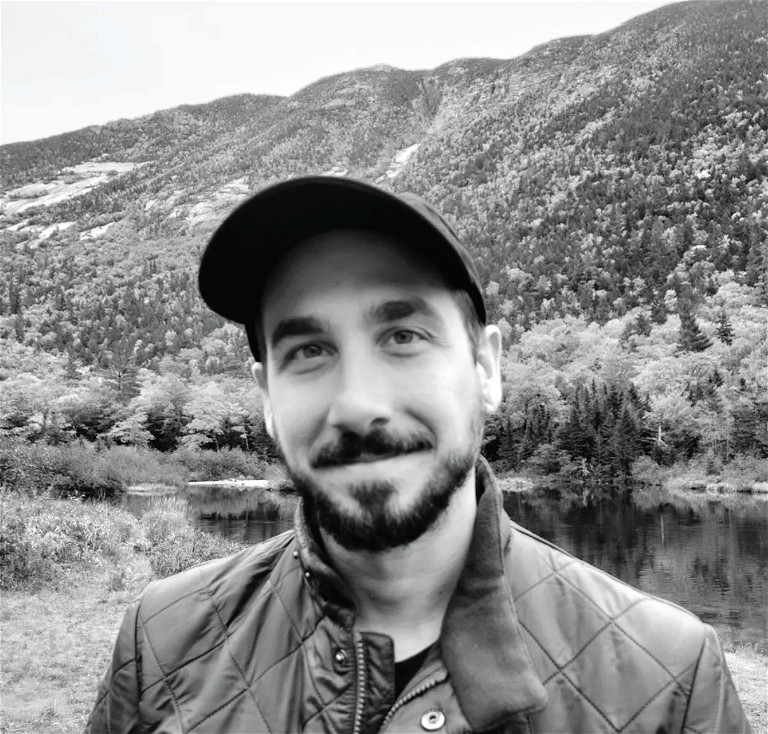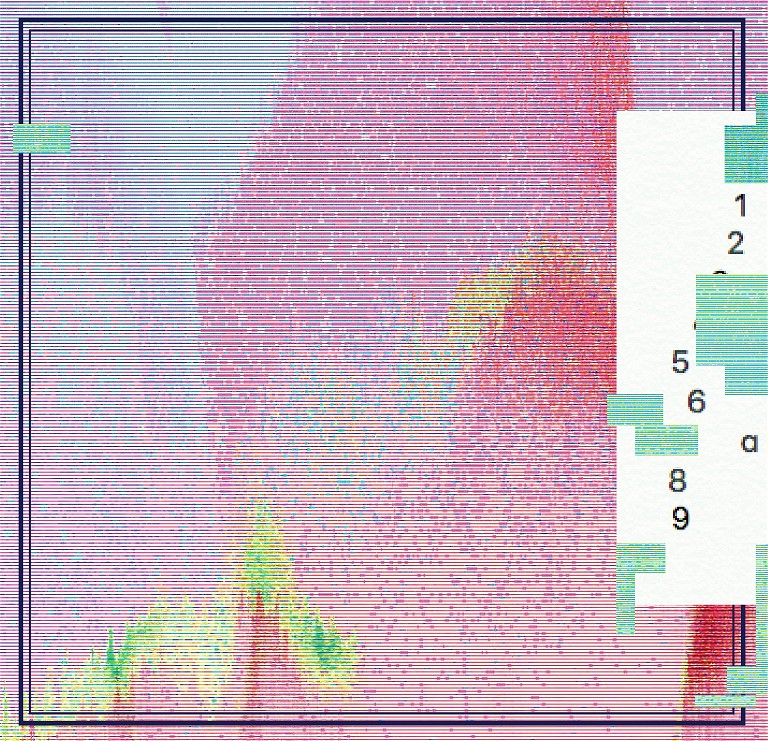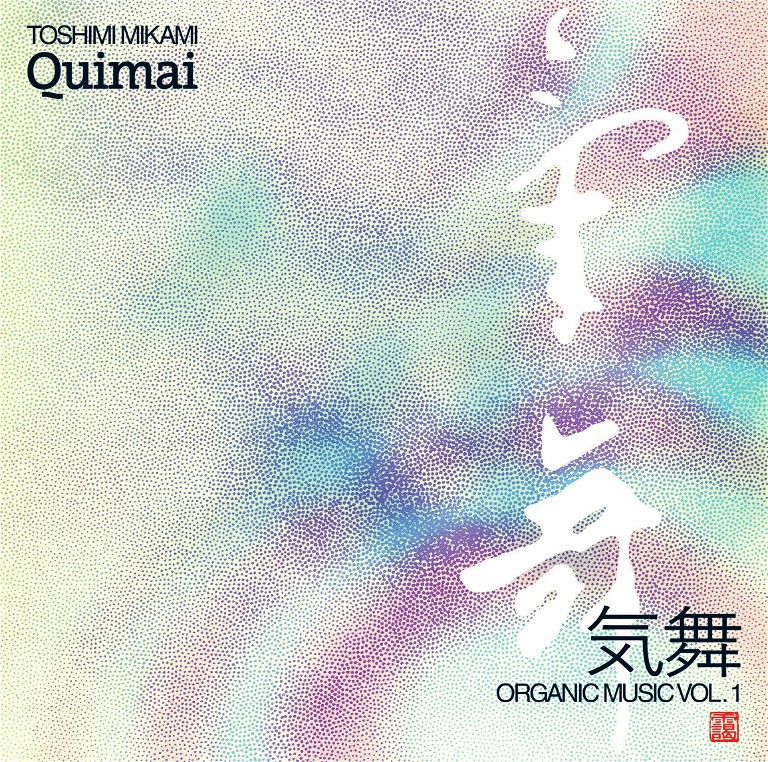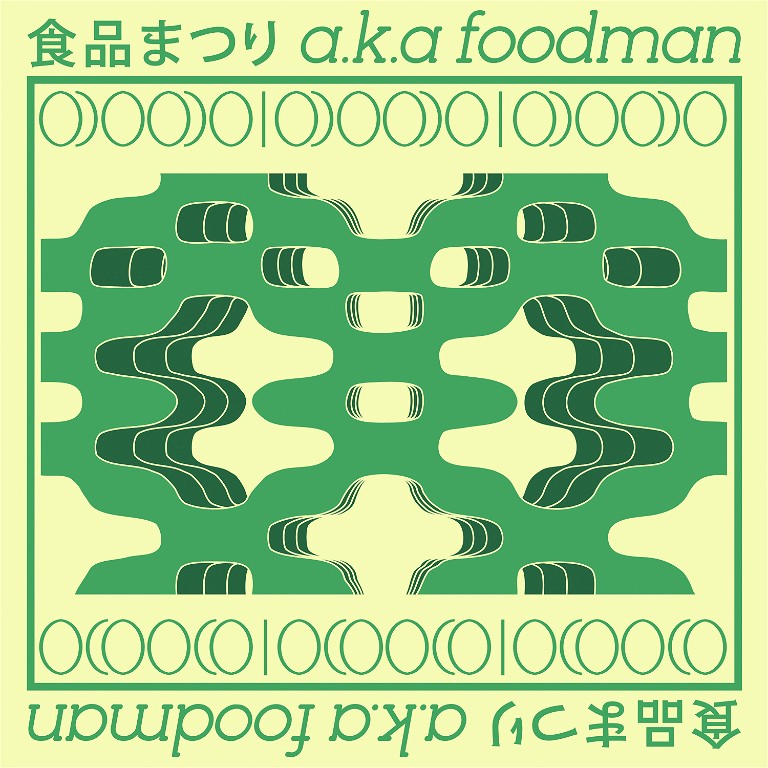CONTEMPORARY ART IN CONTEXT
Sound Design
JOE BASTARDO GRAPHIC DESIGNER, ILLUSTRATOR, AND MUSICIAN

Graphic designer, illustrator, and musician Joe Bastardo.
Graphic design is a multifaceted, rapidly developing, and competitive field that requires designers to understand trends in technology and culture while developing their craft. Joseph Bastardo, a contemporary designer, illustrator, and musician, balances technology, creativity, and a passion for electronic sounds through his innovative designs. Much of his work springs from music—he has designed posters, fliers, logos, t-shirts, and album covers for musicians, record labels, and collaborators from around the world, such as Japanese electronic musician Foodman (Takahide Higuchi).

Joe Bastardo, album cover design for A Fool N Thee by Magic From Space, 2021. Images courtesy of the artist.
Visual Representations
Bastardoʼs music production and graphic design work are closely aligned. He considers the process of collaging and layering essential to both art forms, whether it’s a color scheme, scale of the music, timbre of the notes, or visual texture. His visually striking album covers are meant to evoke and mirror the sounds heard in the recordings. In the Foodman cover (see below), hard-edged green forms mirror the visual signature of sound waves. In the Quimai cover (see below), the pointillist complementary colors in light values suggest the soft and understated sounds of the ambient music.
Bastardo’s intuitive layering of interacting images and shades of color can be seen as the visual representation of music in his design process. Perhaps his most complex collaboration is Electronic Perspectives (see Snapshots), a 400-page book on the history of synthesizers and electronic instruments written by Tom Rhea, a retired professor at the Berklee College of Music.
Art History: Graphic Design
Graphic design is typically defined as the combination of illustration and text to communicate a message. Its roots can be found in the earliest forms of visual language, such as Mesopotamian cuneiform and Egyptian hieroglyphs. As written languages around the world evolved into letters and characters, the invention of printing—movable type in the East (1000s) and West (1400s)—soon followed. In the late 1700s to mid-1800s, new technology allowed mass production of books, broadsides (the ancestor of the poster), pamphlets, and advertisements. During the 1900s in the West, modern design evolved from movements like the Wiener Werkstätte in Austria, Bauhaus in Germany, and the International Typography Style in Switzerland. In the 1980s and 1990s, personal computers and software like Adobe Photoshop made graphic design widely available, forging a path for the age of the internet and social media.
About the Artist
Born in 1986 in Worcester, Massachusetts, Joe Bastardo has been creative all his life. In high school, his formative artistic experiences included playing in a band, discovering local art and music scenes, and learning Photoshop. He achieved a BA in Illustration from UMass Dartmouth in 2009 and has worked as a freelance designer since. Bastardo runs his own electronic music-focused record label, Moss Archive, and creates all of the album art, logos, and typography himself. As a musician, he has produced ten solo albums as Bastian Void and toured Japan with Ant’lrd (musician Colin Blanton) in 2017. The book Electronic Perspectives (see above) will be published in 2024.

Joe Bastardo, album cover design for Quimai: Organic Music Vol. 1 by Toshimi Mikami, 2023 Night Rhythms reissue.

Album cover design for ODOODO by Foodman (Takahide Higuchi), 2019.
Artist Q&A
What are some of the biggest influences on your work?
JB: The largest overall inspiration for my work comes in the form of half-remembered images in my mind. Architecture and decor of the 1980s. My childhood. Similarly, I’m fascinated by the limitations of old hardware like vintage computers and analog synthesizers. I constantly think about our relationship to technology and how it has evolved over the years. I think about the difference between our current state of online ubiquity compared to the days when something like a home computer was near-mythical.
I’ve been highly influenced by the horror and sci-fi of my childhood. Blade Runner, Stephen King, Moebius, Akira, John Carpenter, etc. Both my music and design work try to pay homage to the analog days of the past.
What is a typical workday like for you?
JB: These days, I work at a print shop and work as a freelance designer simultaneously. I wear a bunch of hats at the shop. I do everything from prepress graphic design to machine maintenance to managing all our outgoing UPS shipments. I’ve been a freelance designer since about 2009. For a few years, I did it full-time. I usually start my morning with emails and inbox organization. I tackle my design work during the day and often will work on music in the evenings. Graphic design feels like my identity as a professional, whereas music is more exploratory and expressive. For me, music often needs to happen when I am free to get immersed in the project and donʼt have anything else coming up on my schedule for that day.
Are there any historical Western or Eastern art movements that have impacted your design work?
JB: The German kosmische musik movement of the 1970s. Ambient new-age music and tape culture. Eighties horror and sci-fi books and films. Japanese city pop, environmental music, and anime from the 1980s. Old video games. Nineties UK electronic music such as Warp Records and the related graphic design from that era (The Designers Republic). The mid-2000s noise tape scene and the DIY ambient music revival.
You are also a prolific electronic musician. How do your music and design practices relate or reflect on each other?
JB: There are direct correlations in music production and graphic design. For me, it all breaks down to structure, negative space, tone, value (amplitude), texture, and emotional intent. So, I think about what I want to convey, and through some synesthetic intuition, that informs the scale of the music or the color scheme of a piece of design, the timbre of the notes or visual texture of the piece.
In music and visual art, you can collage and layer pieces together and see how they interact. I often find myself messing with EQ and filters in music much the same way I would adjust levels and hue balance in visual art. It all comes down to legibility and the success of your artistic expression. How many elements are present in the work overall? Is there too much in the mix? Do the separate pieces fit together in a well-composed and cohesive way? In the end, it’s all about mixing bespoke elements into a cohesive, finished piece that communicates some sort of idea or emotion to the audience.
What advice do you have for students looking to pursue a career in design?
JB: Keep your email inbox and computer desktop organized. Have a system for how you determine your pricing. Let that evolve over the years. Weigh the value of every job from a monetary and overall life experience standpoint. For example, sometimes it pays to collaborate with someone as a networking or learning opportunity. Try to find a community of like-minded individuals. Foster your relationships with clients who respect your time and expertise. Start by asking for the client’s budget, and be realistic about how much of your own time you can afford to invest in the project.
Stay humble. Try to recognize the difference between when something is personal and when something is just the art or business world. Always be learning. Don’t let your ego distract you or get in the way of accepting critique, especially from clients. A successful job is one in which both you and the client are satisfied.
Above all else, value your own talents, intuition, perspective, and cumulative wisdom.
T-shirt illustration from the line United Notions, designed for Mozaiks.
Album design for ODOODO by Foodman (Takahide Higuchi), 2019.
Digipak layout for album Topia by Bastian Void (Joe Bastardo), 2021.
Discussion
In small groups, ask students to share their favorite musicians and examples of their albums or videos. Have them analyze the design of videos and album covers for similarities and differences. Ask, “What elements are essential in an album cover? Why are they so important? Does the design match the sound of the music? What does an album cover tell you about what you are about to hear?” After some discussion, introduce students to Joe Bastardo’s designs.
Studio Experiences
- Create visual responses to several unfamiliar pieces of music. Respond instinctively, making marks as you listen without concern for the finished product. Review your work: How did your drawings change with each style of music? Choose one piece as the inspiration for a new work of art.
- Create an album cover or poster for one of your favorite musicians. If you have trouble choosing, expand your options to include an actor, artist, or public figure you admire.
- Create a work of art that combines traditional media with sound. You can use music or sounds that inspire you or create your own. How will the sounds inform your visual choices?
Logo for Electronic Perspectives book, 2024. Images courtesy of the artist.
External Links Disclaimer: The content in SchoolArts magazine represents the views of individual authors and artists, selected for publication by the editorial team. The resources provided are to support the teaching of art in a variety of contexts, and therefore, links to external sources are included. As such, any linked content is not monitored by SchoolArts and should be previewed by a professional before sharing with students.
Written by Karl Cole, Art Historian and Curator of Images at Davis Publications, and Robb Sandagata, Digital Curriculum Director and Editor at Davis Publications. kcole@davisart.com, rsandagata@davisart.com